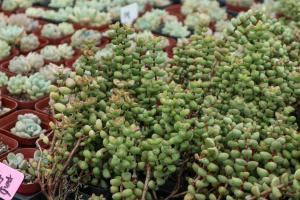How to Water Plants in Pots without Drainage Holes
It can be a bit tricky to water plants in pots without drainage holes. When there are no holes in the pot, water can get trapped and cause root rot. However, with a few simple tips and tricks, you can successfully water your plants in pots without drainage holes.
Choose the Right Potting Soil
The first step to successfully watering your plants in pots without drainage holes is to choose the right potting soil. Look for a soil that is specifically designed for container gardening or indoor plants. These soils are formulated to drain well, which is essential when there are no drainage holes in the pot.
Be Mindful of Watering Frequency
Plants in pots without drainage holes require less frequent watering than plants in pots with drainage holes. This is because the water has nowhere to drain, so it can potentially drown the plant. To avoid overwatering your plants, check the soil moisture level before watering. Stick your finger about an inch deep into the soil. If it feels dry, it’s time to water. If it still feels moist, wait a few days and check again.
Water with Care
When watering your plants in pots without drainage holes, it is important to be careful not to overwater them. Use a watering can with a long spout to carefully water around the base of the plant. Allow the water to soak in and then check the soil moisture level before watering again.
Add a Layer of Gravel
To help with drainage, add a layer of gravel to the bottom of the pot before adding the potting soil. This will create a space for excess water to collect, preventing it from sitting in the bottom of the pot. This will also help to prevent root rot.
Choose the Right Pot Size
Choosing the right pot size is also important when there are no drainage holes. You want to make sure the pot is large enough to accommodate the plant and allow for some soil to dry out between waterings. However, you also want to make sure the pot isn’t too large, as excess soil can retain water and drown the plant.
Use a Moisture Meter
If you’re not sure when to water your plants, consider using a moisture meter. This handy tool measures the soil moisture level and lets you know when it’s time to water. It takes the guesswork out of watering your plants in pots without drainage holes and ensures that you don’t overwater them.
In Conclusion
Watering plants in pots without drainage holes can be a bit challenging, but with the right soil, a careful watering schedule, and some extra attention, it can be done successfully. Remember to check the soil moisture level before watering, use a watering can with a long spout, and add a layer of gravel to the bottom of the pot for drainage. With these tips in mind, your plants will thrive even in pots without drainage holes.

 how many times do yo...
how many times do yo... how many planted tre...
how many planted tre... how many pine trees ...
how many pine trees ... how many pecan trees...
how many pecan trees... how many plants comp...
how many plants comp... how many plants can ...
how many plants can ... how many plants and ...
how many plants and ... how many pepper plan...
how many pepper plan...































